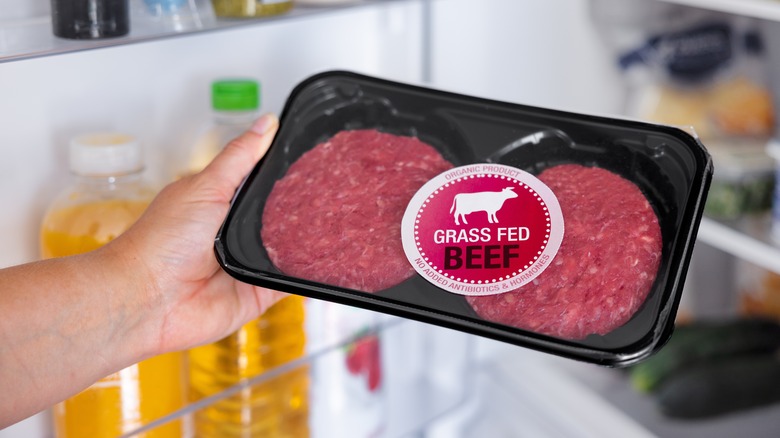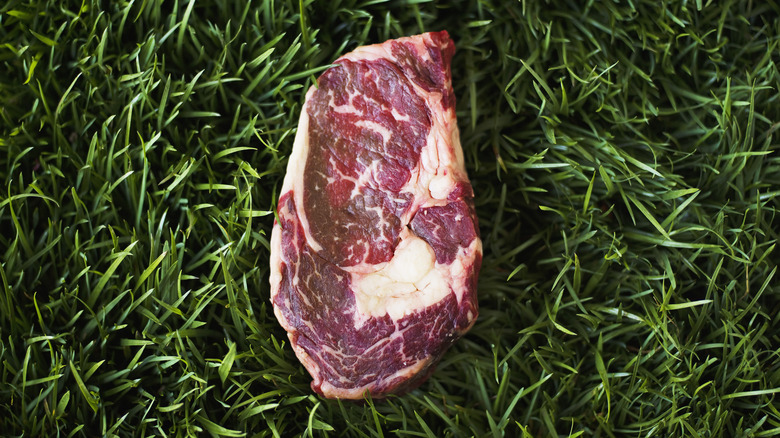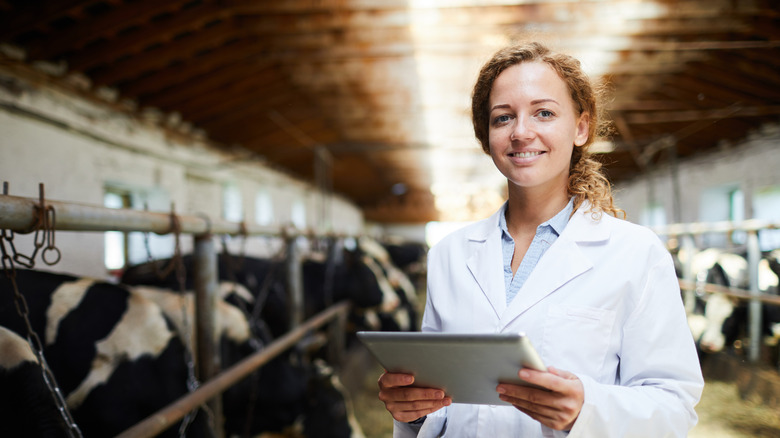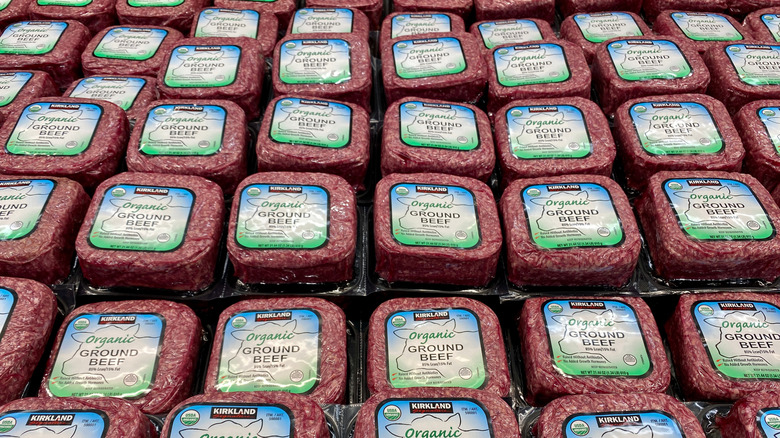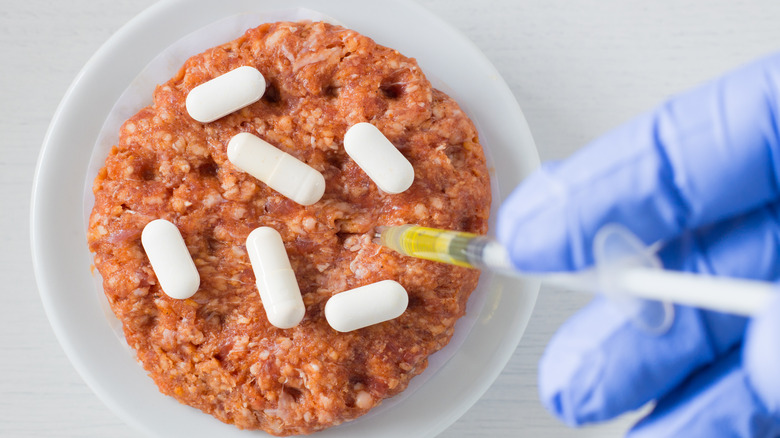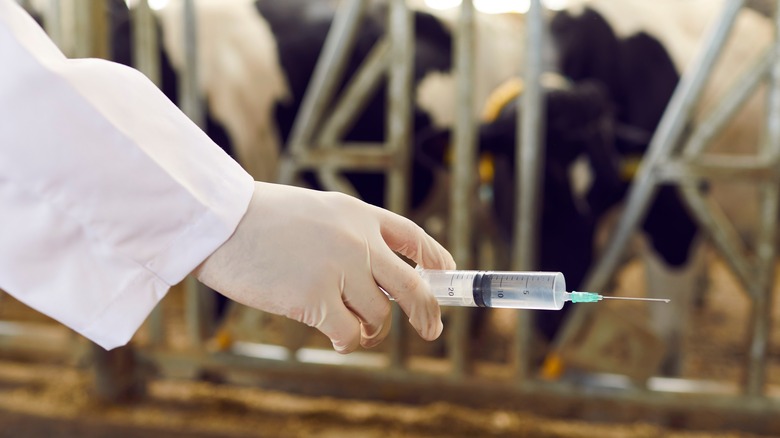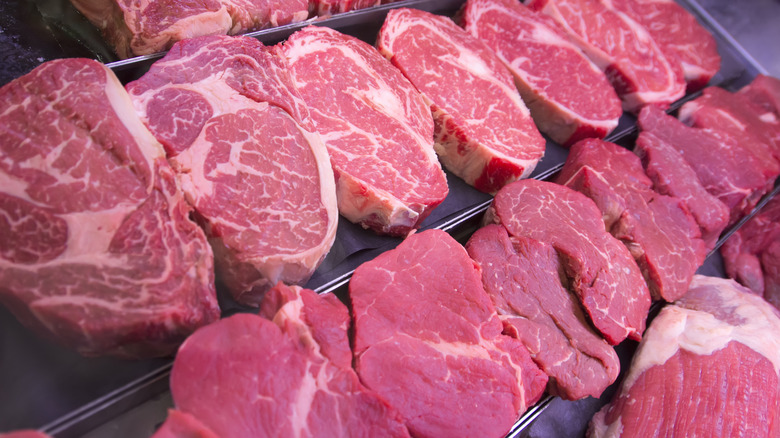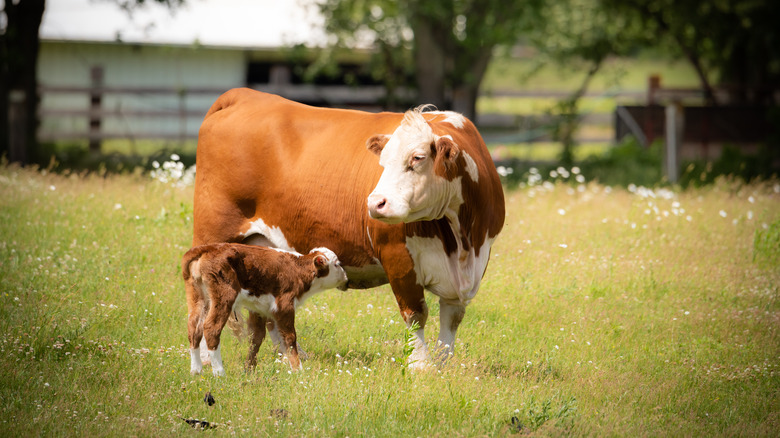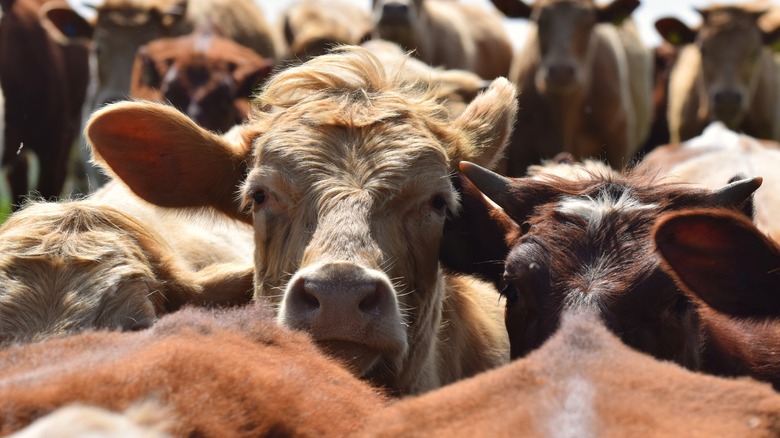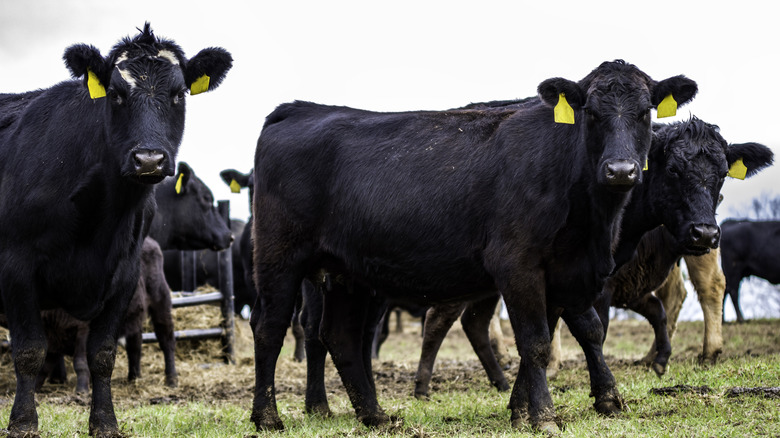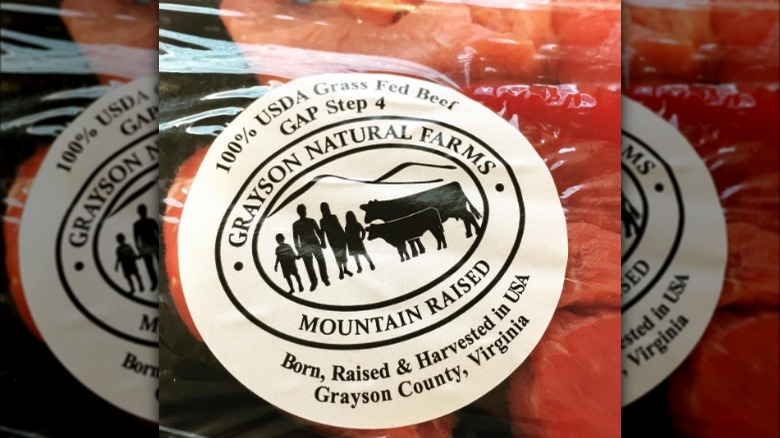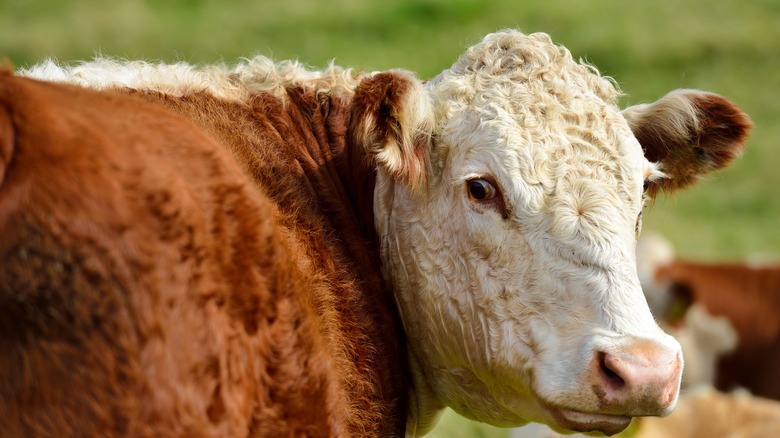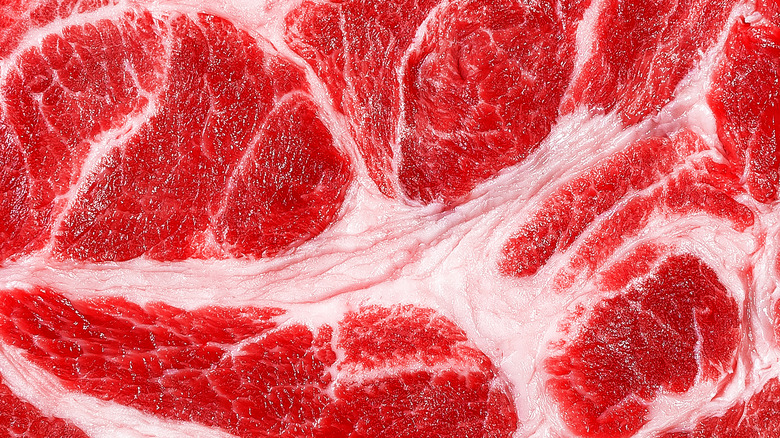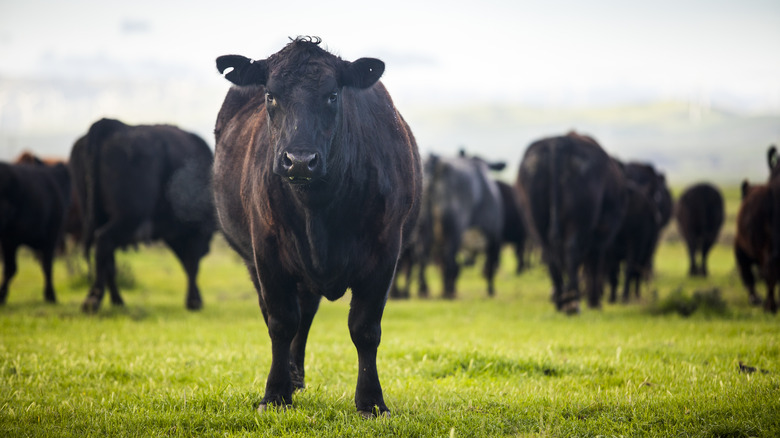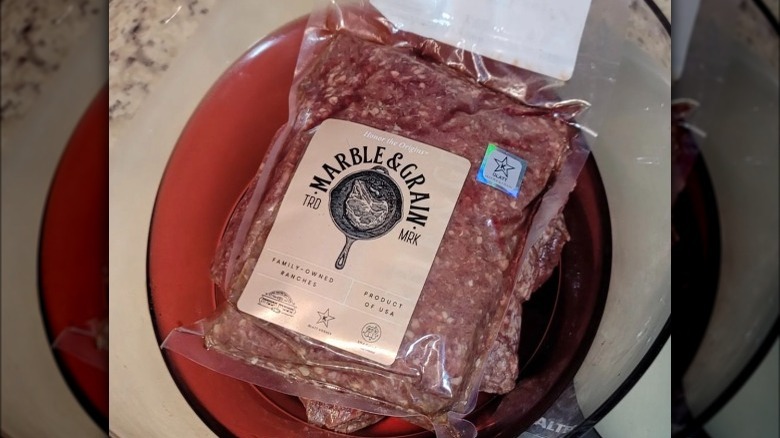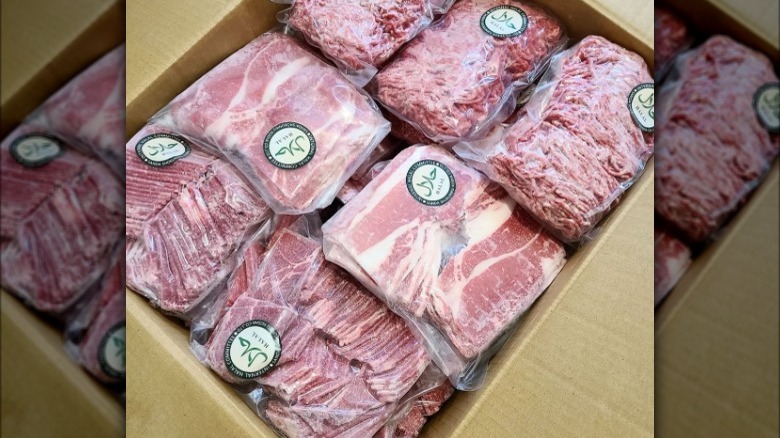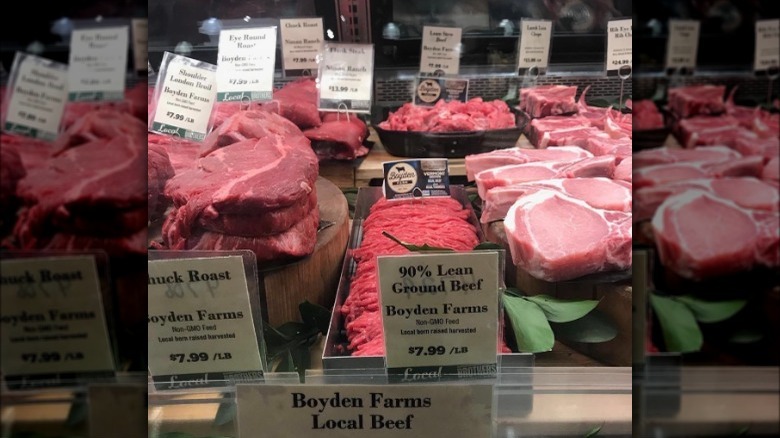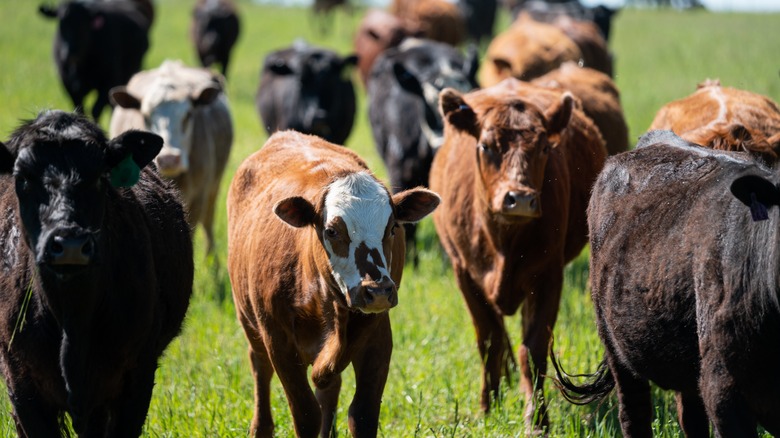What Grocery Store Beef Labels Really Mean
Think about the last time you went to your local grocery store's meat section: Amid all of the plastic-wrapped packages of sirloin and chuck, you might find an array of claims like "pasture-raised," "no antibiotics used," and "all-natural." As a consumer, how can you weed through these claims to find which ones are founded and which are bogus? And more importantly, what's the difference between all of these claims, and what claim trumps the other?
There are many government agencies and independent certifying bodies that work to regulate what claims producers can put on their packages. The primary regulatory authority for food and meat labeling and inspection is the United States Department of Agriculture (USDA) Food Safety and Inspection Service (FSIS). In addition, independent labelers like Certified Humane and the Global Animal Partnership provide voluntary certifications to beef producers.
We will break down some of the most common claims and certifications you'll see associated with beef at the grocery store and what each actually means.
Grass-fed
"Grass-fed" beef means that the animal consumed grass or forage (grasses like hay or legumes) during its lifetime. Before 2016, producers had to apply for a "USDA Grass-fed" certificate to prove animals ate at least 50% forage. Since this program was revoked, there is no figure for the amount of time a "grass-fed" cow must remain on a forage-based diet to be considered grass-fed, nor is there a requirement to show proof that a cow was grass-fed at all to receive this certification. As a result, there is a lot of confusion about what "grass-fed" means or, really, a lack of regulations to ensure the label means anything at all.
Grass-fed isn't really better than regular beef, at least in terms of animal welfare. Just because a cow is grass-fed doesn't mean it will live its entire life on a picturesque green pasture. And since grass-fed cows are only required to be fed a forage-based diet, they may live their entire lives without ever touching grass underneath their hooves. It can live indoors and still be fed cut forage, which decreases the amount of land needed to grow the cow and allows farmers to raise cattle in areas where growing forage in the winter is impractical.
USDA Process Verified
The USDA Process Verified seal is not exactly a claim itself but a verification process that ensures that the processes that the producer claims are occurring are indeed occurring. These audits are specific to the producer's needs and verify claims like "antibiotic-free," "raised without the use of growth hormones," and other certifications for tenderness and meat quality. The Process Verified label is entirely voluntary and is paid for by the producer. It also does not absolve the producer from meeting other regulatory requirements.
Alone, the Process Verified seal has no relation to the animal welfare or quality of the beef. It only examines the process through a series of audits and site visits to ensure that the producer's claim is accurate. However, a significant drawback is that the producer can write their own standards for a particular claim, such as raised without antibiotics or feeding claims; it's only Process Verified by a third party if the claim is accurate.
USDA Organic
The USDA organic beef label has some of the most rigorous standards of all meat labels but may not be entirely what consumers think it is. Organic beef does not include hormones or antibiotics, nor are cows fed grain made with genetically-modified ingredients. Cattle must also have access to at least 120 days of organically-managed pasture during the grazing season, which cannot be treated with certain chemicals, per USDA standards.
Supplementary hay and grain must also meet USDA organic standards, meaning that it is grown without certain synthetic chemicals and genetically modified components. In addition, these processes must be well-documented and recorded from the third trimester of the animal's life until it is slaughtered via a rigorous audit and evaluation process.
The most significant gap in USDA Organic standards is the animal welfare component. Although consumers may assume that organic beef has access to pasture and the outdoors, the standards currently lack any specificity in what exactly producers need to provide to ensure cattle can exhibit "natural behaviors." Therefore, one of the major complaints with the USDA organic system is that the cows are raised almost identically to those without the organic claim.
Raised without hormones
The use of hormones in beef production is a contentious issue. Producers often give cows hormones, some of which are naturally occurring, like estrogen and androgens, to boost body mass before slaughter. This, in turn, decreases the amount of time the cow spends in a feedlot on grain. These hormones are delivered via a tiny implant placed under the skin near the cow's ear, which is then discarded during processing.
The levels of estrogenic activity in humans caused via the implant is marginal and have not been shown to cause adverse health effects in human populations. However, this has not stopped many producers from marketing their beef as being made with "no added hormones," so long as the producer can accurately document and verify this claim with the USDA FSIS. Some certifications, such as USDA organic, prohibit the use of synthetic hormones in certified beef production.
Raised without antibiotics
The only thing more contentious than hormones in beef production is antibiotics. Antibiotics are used for numerous reasons in livestock agriculture, including controlling bacterial infections and preventing disease in a herd. Antibiotics called ionophores, such as those that alter the gut microbiome of ruminants like cows, can also be used to accelerate body mass.
The USDA has adopted several best practices to help slow the progression of bacteria resistance stemming from the agricultural application of antibiotics. Producers must have all treated cattle undergo a withdrawal period before slaughter and processing to prevent the buildup of antibiotics in meat. The USDA also regularly inspects meat and ensures that any meat testing "hot" is pulled from the pipeline and analyzed.
Producers that use the "raised without antibiotics" claim must prove that the animal was not treated with antibiotics throughout its lifetime. The producer is required to submit documentation to the USDA FSIS regarding their control and tracing of RWA products. However, no consistent testing ensures that each claim is accurately met.
All-natural beef
A large portion of meat in the case is considered to be grown under an "all-natural" regime. This claim means that the beef has not been altered by adding coloring agents, other ingredients like marinades, or chemical preservatives. "All-natural" meat can only be claimed after the meat was processed and has nothing to do with how the animal was raised, so the animal could receive hormones or antibiotics and still be marketed as "all-natural." In addition, no governing organizations control how the marketing claim is used — so it's more of a gimmick than a founded distinction.
"Naturally-raised" beef, on the other hand, is regulated under the USDA Agricultural Marketing Service and claims that the meat was raised without the addition of synthetic growth promotants (HGPs), antibiotics, or animal by-products. It can contain post-processing adulterants like marinades or preservatives. Beef can also be marketed as all-natural and naturally-raised if it fits the claim of these certifications.
Pasture-raised beef
The claim "pasture-raised" refers to the location where the animal spends its life. Rather than spending time in a feedlot, these animals are kept out on the pasture where they can forage for shrubs and grasses. However, some pasture-raised beef cattle have their feed supplemented with grain, especially during the cooler months when forage isn't as readily available.
Why raise cows on pasture? From an environmental angle, it's one way to put marginal land to work that wouldn't otherwise be suitable for growing row crops. Allowing the cows to eat the pasture also decreases the high input costs of feed for farmers. It's also how cows were born and raised to move on the landscape, so pasture-raising can do wonders for these animals' mental and physical well-being compared to the stress and physical toll a feedlot can take on a cow.
Animal Welfare Approved
The Animal Welfare Approved (AWA) certification is a third-party certification given by A Greener World (AGW). The organization requires all beef undergoing certification to be raised on pasture and range land for the entire duration of its life. The certification is also only given to independent farmers rather than consortiums and undergoes regular auditing annually.
The AWA certification prohibits using non-therapeutic antibiotics for disease prevention or growth promotion and synthetic growth hormones. It also prohibits practices like tail docking and dehorning and sets best practices for de-budding calves. Beef cattle under the AWA certification cannot be fed any grain derived from fishmeal or aquatic sources nor meat-based, animal-derived sources. The organization also sets specific standards for the amount of space that must be allocated for each cow.
Certified Humane
Certified Humane is a registered non-profit organization that works to improve the conditions and well-being of animals used for food production. Among its prohibited practices are growth promoters in feed, antibiotics to increase growth, and animal-based feed. Beef cattle under this certification must also have access to the outdoors, but pasture is not required. This means that Certified Humane cattle can be raised on feedlots and fed a grain-based diet. In addition, the Certified Humane standard sets requirements for bedding, enrichment, transportation, and slaughter practices to ensure the safety and well-being of the cow.
It is important to note that Certified Humane and the "humanely raised" claim are not the same. The Certified Humane certification includes regular procedural audits, while the term "humanely raised" is an unfounded claim that any producer can make without verification.
Global Animal Partnership
The Global Animal Partnership (GAP) is one of the more segmented animal welfare certifications. It contains four different levels of standards based on what the beef producer is able to accommodate, and it is flexible in supporting farms of varying sizes.
The base standard is that cattle are kept on pasture except for finishing, the pasture has at least 50% vegetative cover, transport time cannot exceed more than 25 hours, and cattle must have protection from all weather extremes via the shelter. In comparison, the highest level of certification requires 100% pasture-raised conditions that have 75% vegetative cover.
The less intensive levels may only require 75% of the animal's life to be spent on pasture and a maximum transportation time of eight to 16 hours. All of the certification levels do not permit the use of antibiotics, added growth hormones, or animal by-products. Third-party audits are mandated for every level at 15-month intervals.
American Humane Certified
Not to be confused with Certified Humane designated, American Humane Certified is an annually inspected certification that requires farms to adhere to a no-tolerance policy of animal abuse and maltreatment. It does not, however, mandate natural living conditions for the animal and allots some practices that are deemed inhumane by other certifying organizations (like tail docking).
In addition, this certification is completed via a point system and must meet 85% of the stated standards to be certified. The drawback of this type of model is that consumers aren't made aware of what standards the producer failed to meet, especially considering the provisions for enrichment and quality of life are limited.
The American Humane Certification label does not require any beef to be grass-fed or raised on pasture. It also permits the use of antibiotics and synthetic additives for disease prevention and treatment.
Graded beef
Beef cut grades are not related to the treatment of the animal or exposure to certain synthetic chemicals. Instead, the grading system indicates tenderness, juiciness, and flavor. Although the USDA designates eight beef grades, packaged beef sold at the store will only come in one of three: prime, choice, or select. These are the highest grades of beef given out of the eight.
Prime beef is the most highly marbled out of all of the grades. This fat means that the beef is the juiciest and tenderest, perfect for grilling and broiling. Since this steak only makes up between 2% and 5% of all meat sold in the store, it is more likely that you'll find it at restaurants and high-end venues. Choice beef has slightly less marbling and encompasses about half of all the beef graded by the USDA.
Ribeye and sirloin are two cuts of steak that are frequently choice grade and are best cooked depending on the location of the cow in which they originate. Lastly, select beef is the leanest commercial grade and needs to be cooked quickly to avoid drying the cut out; these include brisket, chuck, and shank.
Angus beef
Angus beef is actually just a breed of cow used in beef production. Contrary to popular belief, it has nothing to do with the quality or grade of the meat, just the species of cow from which the meat came from.
The Angus breed, also known as the Aberdeen Angus, is a Scottish cow bred for a high amount of muscle on its body. This translates to beef that is fattier, juicier, and more tender than other species of cow used for beef production. The cow comes in two primary colors, black (which you'll often see marketed on restaurant menus) and red. Both black and red Angus are the same species of cow, so their meat is nearly identical in flavor and texture.
Kosher beef
There are many misconceptions about what the Kosher certification has to do with the humane treatment of livestock animals. A study by the Jewish Initiative for Animals found that a shocking portion of the general American population and Jewish-identifying adults believe that Kosher meat is more humane and inherently better than non-Kosher meat.
The reality is that Kosher meat is just slaughtered and prepared according to Jewish dietary law. The animal must be slaughtered via a shochet (ritual slaughter), and the carcass must be examined for any blemishes or defects during processing. Then, it is soaked and salted to remove any remaining blood before being rinsed again before preparation. The kashrut (Kosher processing) doesn't occur until the animal is slaughtered, so Kosher meat can be raised with antibiotics, growth hormones, and synthetic additives.
Halal
Halal beef is slaughtered in accordance to Muslim dietary law (zabihah). This distinction prohibits the use of animal byproducts in animal feed (because some may be considered haram — meaning forbidden). Otherwise, the animals must be kept in good condition with access to clean water and "preferably without blemish (scars or injuries)," per Texas A&M.
The slaughter process is very specific and must be adhered to in order for beef to be considered halal. The process must be completed by a Muslim, Allah must be pronounced during the process, and the animal's face must be pointed towards Makkah (or Mecca, the Muslim holy land). The animal is delivered a very quick pass across the throat with a sharpened knife to sever the arteries and lead to a relatively quick death before it is bled out, as blood is also considered haram. Halal beef cannot be given antibiotics, porcine (pork-based) additives, hormones, or prohibited antibiotics.
Grass-finished
Grass-finished beef is often thrown around just like "grass-fed." However, the two terms are fundamentally different. Grass-finished means that the cow finished the last stage of its life prior to slaughter on grass or forage, while grass-fed implies that half of the animal's life was spent eating grass.
Animals are traditionally fed grain in the three to six-month period before slaughter to increase weight and muscle mass. According to Verde Farms, grass-finished beef is slightly healthier than grain-finished beef; it contains 20% fewer calories and higher levels of omega-3 fatty acids. However, grass-finished beef tends to have a gamey, lean flavor that differs from the subtle sweet taste of grain-finished cows. Cows that are grass-fed and grass-finished beef tends to be the leanest out of all the types, but the flavor of the meat can be modified depending on what type of forage the cow eats over the course of its lifetime.
Non-GMO
Genetic modification (GM) comes more into play with livestock via animal feed rather than the animal itself — although the FDA deemed a project for gene-edited, more heat-tolerant cows low risk in 2022. Animal feed, especially cattle feed, contains corn and soy. Per the Food and Drug Administration, 95% of the livestock animals in the United States are fed GM feed. When an animal eats GM grain, it does not turn into a genetically modified organism (GMO), which means that it is not required for a producer to disclose this information on the label.
Some certifications, like USDA Organic, prohibit the use of GM ingredients in animal feed. Producers seeking to market their meat as being GMO-free can also go through a third-party certification process, such as through the Non-GMO Project.
Free-range
The claim "free-range" can be used on any meat or poultry product, provided that the producer submits proof of the animal's housing conditions to the USDA's Labeling Program and Delivery Division. If the animals are given continuous, free access to the outdoors for at least 51% of their lifespan, the producer is eligible to use this claim on products. Feedlot-raised livestock or those raised in confined spaces are not eligible for this distinction.
Allowing cows access to the outdoors and spaces where they can move is important for the mental and physical well-being of the animal, but also to disperse the environmental impact of animal feeding operations. Improperly managed waste management systems contribute to numerous issues, including water pollution, pathogen contamination, and antibiotic-resistant superbugs.
